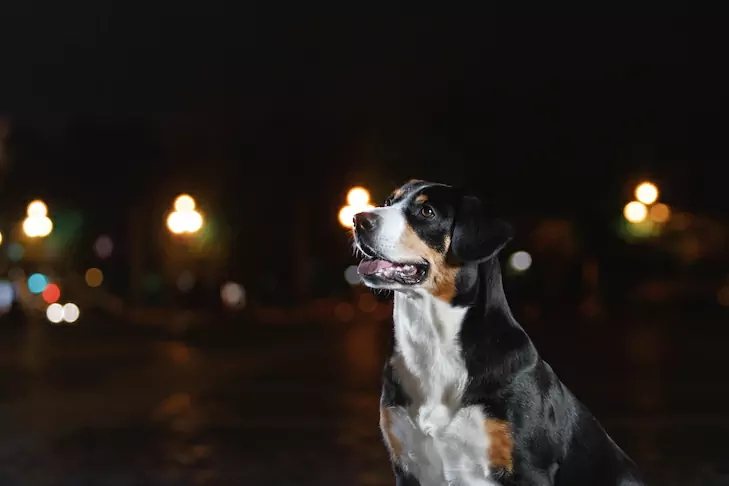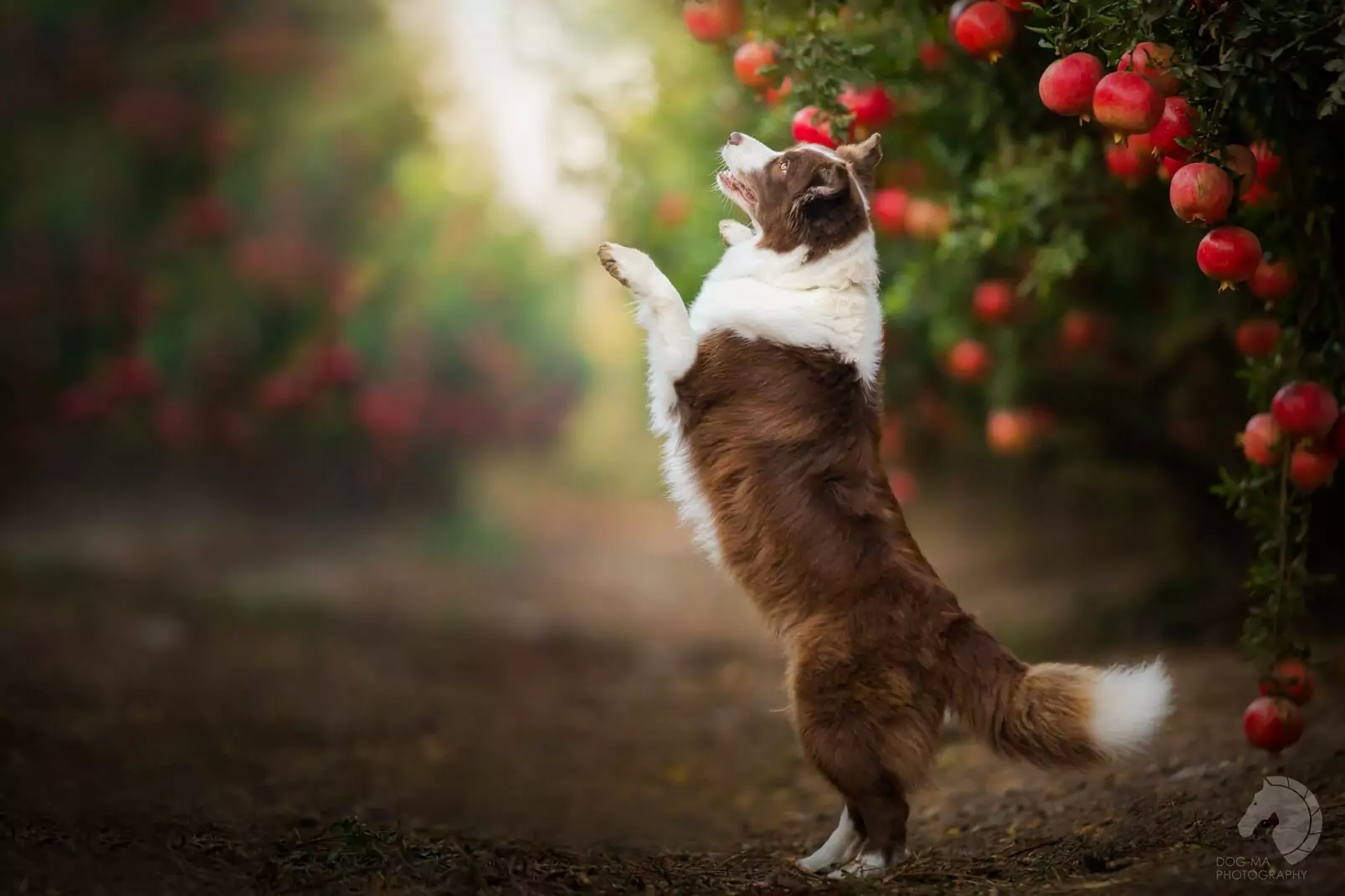Can dogs see colors?
2022-08-04
I. Can dogs see color?
Dogs can see color - contrary to what we once thought. Although they can't see black and white, they also can't see the same colors as humans. This is because the anatomy of the dog's eye and its photoreceptors is different from that of humans (and other species), which gives dogs a unique visual perspective.
What colors can dogs see?
The dog's eye has only two types of retinal cells (only 20% of the human eye's retinal cells). Therefore, the dog's color spectrum is limited to gray, brown, yellow, and blue. This is called dichromatic vision and is similar to humans who experience red-green color blindness. Some colors - such as shades of red and orange - may appear as another color to the dog, such as brown. Green may appear blue. Dogs may also have difficulty noticing the difference between shades of the same color, such as light blue and dark blue.
If your dog has trouble finding toys or treats, it's not that they're not interested in them - he may not see what you're giving him. The next time you buy a dog toy, try something blue or yellow; they'll be more suitable for your dog.
What does a dog's vision look like?
During the day, a dog's vision is 50% less clear than that of a human. So, things seem to be more blurry to a dog's eyes. However, this is okay because dogs rely on their strong sense of smell and hearing.
Can dogs see in the dark?
Dogs can see very well in dark or low light conditions. This is because their eyes are anatomically different from human eyes. They have more optic rod cells in the retina than humans do, so their eyes are more sensitive to movement and light. So dogs can catch small movements and detect the presence of strangers or prey. Like other predatory animals, dogs have a reflective membrane at the back of their eyes.
This membrane reflects light that is not absorbed by the optic rod back to the retina, allowing the eye to absorb additional light and enhance night vision. This also makes the dog's eyes appear as if they glow in the dark.
Different breeds may affect what a dog can see
According to Bonnie Beaver, author of the book Canine Behavior: A Veterinary Guide, a dog's visual field may vary by breed. Dogs with narrow faces and long noses, such as wolfhounds, have a narrower field of binocular focus and a larger field of peripheral vision. On the other hand, short-headed breeds, such as the Pekingese, have a wider binocular visual field but a larger blind spot.

II. Are dogs color blind? What does the world look like to them?
Dogs are not colorblind.
The human eye has receptors that capture light called photoreceptors, and there are two types of photoreceptors: one is the optic rod cell, which senses light and is responsible for nighttime vision, and the other is called the cone cell or optic cone cell, which can distinguish colors and is responsible for daytime vision.
The dog's retina has many cone cells, so the world seen in the dog's eyes is also colorful, rather than monotonous black and white. However, unlike humans, dogs have only two types of retinal cells, one less than humans, so dogs do not see as many colors as humans do.
Dogs can see blue, and purple is also blue in their eyes; red is a dull grayish earthy yellow, and green is a grayish yellow.
In dogs' eyes, the more unusual colors are blue and purple, and the more saturated colors are blue and yellow.
In other words, dogs can not be considered color blind, only color blind. So the question is since they can't distinguish between red and green, how do guide dogs cross the road?
How do guide dogs cross the road?
Guide dogs can distinguish between red and green lights not because of the judgment of color, but by the difference in the brightness of the two lights. Although the dog cannot see red or green, the different shades of gray in its eyes can be judged.
The dog's ability to discern subtle changes in the intensity of gray is very strong, relying on this ability to distinguish between light and dark changes on objects, producing a three-dimensional visual image.
This explains why guide dogs can guide their blind owners through traffic lights because they can rely on the change in brightness of the light to distinguish whether they should cross the street or stand still and wait.
How good is a dog's eyesight
The human visual field is generally only 160 to 180 degrees wide, but dogs have larger pupils than humans and more retinal cells, so their visual field can generally reach 200 to 250 degrees.
Dogs have a high number of optic rod cells in their retinas, which help them perceive faint light, so objects that are invisible or difficult for people to see at night can be easily distinguished by dogs.
Dogs are nearsighted
Generally, a hundred meters away from the stationary objects, the dogs are not clear, if parents call the dogs from a distance, they will generally freeze and keep staring at the source; when the parents come closer, the dogs will run over, because the dogs are nearsighted.
But as hunting animals from the dog, they are very strong and sensitive to the ability to distinguish dynamic things. It is said that hounds and shepherds can notice people waving their hands from 1500 meters away. Different breeds of dogs will have different visions due to the position of their eyes. Dogs with small heads have a wider field of vision instead, so they are more sensitive to their surroundings.
Dogs are not particularly dependent on visual animals, because they have a strong sense of smell and hearing, so a weaker vision does not affect them in any way.
In other words, the reason your dog can recognize you as its owner is not because of your face, but your voice and smell. This is the reason why a dog that has been lost for years can recognize a very changed owner.
Three, the world of color in a dog's eyes. Dogs are color blind, but they don't just see black, white, and grayProbably one of the most frequently asked questions about dog vision is whether dogs can see color. Many people will give a simple answer - dogs are colorblind. This simple answer can lead to dogs being misunderstood as not seeing any colors, only a black, white, and gray world.
Such an idea is wrong. The very clear scientific conclusion is that dogs do see colors, but they see neither as rich nor as many colors as humans see.
Both human and dog eyes contain special light-catching cells called photoreceptor cells that respond to color. Dogs have fewer optic cone cells than humans, which suggests that their color vision is not as rich or strong as ours. However, the trick to seeing color is not just having a visual cone, but having several different types of visual cones, each tuned to a different wavelength of light. Humans have three different kinds of optic cones, and their combined activity gives them a full range of color vision. The most common type of human color blindness is because a person has lost one of the three cones. With only two visual cones, the person can still see color, but much less than a person with normal color vision. And this is exactly what happens in dogs.
We certainly can't rely on pure guesswork to determine what colors a dog can see; we must experiment with the dog's color discrimination behavior to get a more accurate conclusion.
Jay Netz of the University of California, Santa Barbara, tested the color vision of dogs. In many repetitions of the test, the dog was shown three consecutive light panels, two of which were the same color and the third was a different one. The dog's task was to find a different one and press a button on this light board. If the dog chose the right one, it would receive a reward as an incentive to try to recognize the different colors.
Nez confirmed that dogs can indeed see colors, but much less than normal. Instead of seeing the rainbow as purple, blue, blue-green, green, yellow, orange, and red, a dog will see it as dark blue, light blue, gray, light yellow, dark yellow (kind of like brown), and very dark gray. In other words, dogs think the colors of the world are yellow, blue, and gray. They consider green, yellow, and orange to be yellow and purple and blue to be blue. Blue-green is considered gray. If this pile of color expressions is dizzying to look at, you can see the spectrum of people and dogs below.
What is the specific significance of understanding that dogs see colors differently from what we see, other than knowing that they are not completely color blind and mistakenly think they can only see black, white, and gray?
I don't know if you dog owners have found that the various items you buy for your dog, red and orange are very common color schemes, in addition to collars, leashes, and toys for dogs also have more of these two colors. Because in our human eyes, these two colors are obvious and eye-catching. However red is difficult for dogs to see. It may appear as a very dark brownish gray or maybe even black. This means that the bright red dog toy that you can see is hard for your dog to see.
So, to match the floor of your home, what color new toy are you going to give your dog if you want him to see the toy you bought him more easily?
Previous:Can dogs smile?
Next:Do dogs sweat?
Was this article helpful to you?
Other links in this article
English:
Can dogs see colors?
Deutsch:
Können Hunde Farben sehen?
español :
¿Pueden los perros ver los colores?
Italiano:
I cani possono vedere i colori?
Nederlands:
Kunnen honden kleuren zien?
Polskie:
Czy psy widzą kolory?
Português:
Os cães conseguem ver as cores?
português (Brasil):
Os cães conseguem ver as cores?
русский:
Могут ли собаки видеть цвета?
日本語:
犬は色を見ることができるのか?
中文简体:
狗能看到颜色吗?
中文繁体:
狗能看到顏色嗎?
Comments

Is a dog's mouth cleaner than a human's? Dogs' mouths need regular cleaning

Can dogs eat beans? Do dogs eat beans for health?

Can dogs eat lemons? Fruits that dogs should not eat more of

Do dogs have nightmares? Are dogs' dreams similar to humans'?

Can dogs eat raw beef? The benefits and drawbacks of beef for dogs

Is raw meat good for dogs? Can dogs eat raw chicken?

Can dogs eat pomegranates?

Can dogs eat ham?Can all types of ham hocks be eaten?

How to give a dog a bath

Can dogs eat kimchi?








